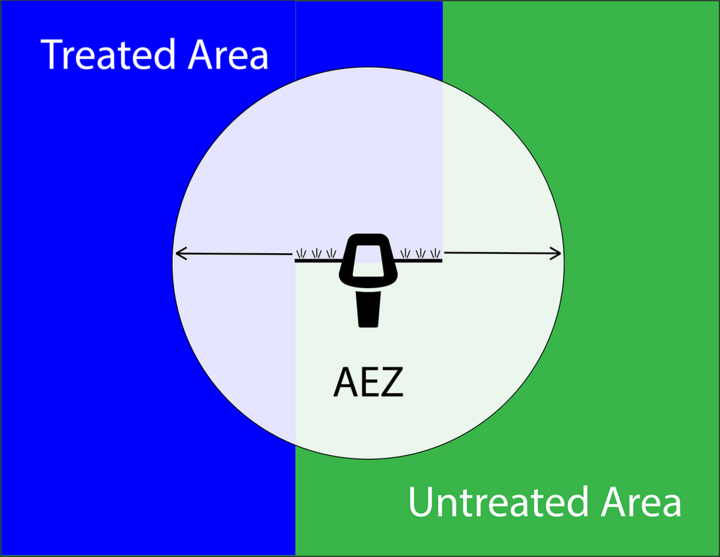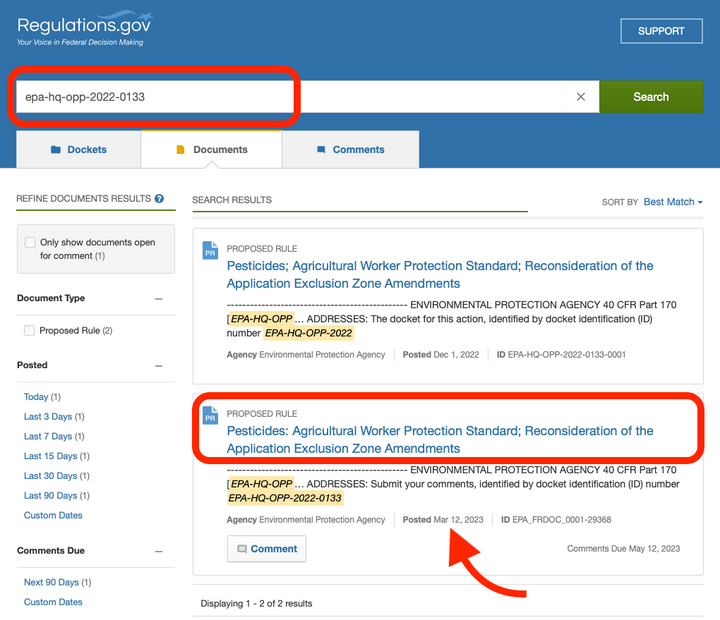The U.S. EPA published a proposed rule on Monday that would revise the Application Exclusion Zone (AEZ) component of the larger Worker Protection Standard (WPS). The purpose of the AEZ regulation is to protect farm workers and bystanders from pesticide exposure by establishing a buffer area surrounding application equipment in which entry is prohibited, except for appropriately trained and equipped pesticide handlers, during the course of certain agricultural pesticide applications.
Background
In 2015, the EPA made major revisions to the WPS, which originated in the 1990s and establishes a number of responsibilities for agricultural employers (and pesticide applicators) to protect their employees from pesticide exposure. The AEZ first became a component of the WPS at the time of the 2015 revision.
In 2020, the EPA proposed changes to the AEZ. These 2020 changes were challenged in court, leading the court to pause their implementation. This pause has continued to the present day, meaning that the 2015 AEZ rule remains in effect.
As the court challenge has played out, the Agency undertook a review and “determined that the provisions in the 2020 AEZ Rule that weakened protections for farmworkers and nearby communities from pesticide exposure should be rescinded to protect the health of farmworkers, their families, and nearby communities.”
What is EPA Proposing?
EPA’s latest AEZ proposal largely mirrors the 2015 rule while retaining two provisions from the 2020 rule.
When a pesticide application (for the purpose of agricultural production) is taking place on an agricultural establishment, the agricultural employer is responsible for keeping their employees out of pesticide-treated areas and AEZs. If an unauthorized person (i.e., anyone besides pesticide handlers involved in the application who have been trained and equipped with personal protective equipment) is in an AEZ, the pesticide applicator must suspend the application until the person leaves the AEZ. The 2020 AEZ rule specifically stated that the application can resume after people leave the AEZ; this language was missing in the 2015 rule, and EPA has retained it in the new proposed rule for clarity. AEZs only exist during an application. Most pesticide labels also require a restricted-entry interval (REI), which prohibits entry into treated areas for a specified length of time after an application is completed.
An AEZ that extends horizontally 100 feet from the outermost nozzles in all directions (Figure 1) is required for:
- All aerial, air blast, fumigant, smoke, mist and fog applications.
- Ground-based spray applications using fine, very fine or extremely fine droplet sizes.

An AEZ that extends horizontally 25 feet from the outermost nozzles in all directions is required for:
- Ground-based spray applications using medium or larger droplet sizes that are made from a height of greater than 12 inches above the planting medium.
No AEZ is required if an application does not match any of these circumstances. For example, a ground-based application of a granular pesticide does not require an AEZ.
The 2015 rule defined droplet sizes by Volume Median Diameter. To make it easier for employers and applicators to determine the required AEZ for a given application, the 2023 rule proposes to adopt the American Society of Agricultural and Biological Engineers’ droplet size classification system. Learn more about how pesticide droplet sizes are defined.
The 2023 proposed rule retains another provision from the 2020 rule. Under this provision, farm owners and their immediate families could choose to remain inside a house or other enclosed structure in an AEZ during pesticide applications instead of vacating the area.
The Bottom Line
Federal rulemaking is a long process; it will likely be several months before the EPA finalizes and implements the new proposed AEZ rule. The public has until Friday, May 12 to submit comments on the proposal. Based on the comments received, the Agency may or may not alter the rule before finalizing it. As of the writing of this article, the 2015 AEZ rule remains in effect. A short video is available on YouTube from Nebraska Extension’s Pesticide Safety Education Program that illustrates the requirements of this rule.
To submit a comment on the proposed AEZ rule:
- Visit Regulations.gov.
- Paste the following docket ID into the search bar: EPA-HQ-OPP-2022-0133.
- Select the proposed rule posted March 12 (Figure 2).
- Read the proposed rule, especially Units II and III, as these sections describe specific feedback the EPA is seeking.
- Click the “Comment” button, write or paste your comment in the space provided and click “Submit Comment” to submit.
For more information on employer obligations and worker rights under the Worker Protection Standard, please see Extension Circular 3006, "Worker Protection Standard for Agricultural Establishments".

